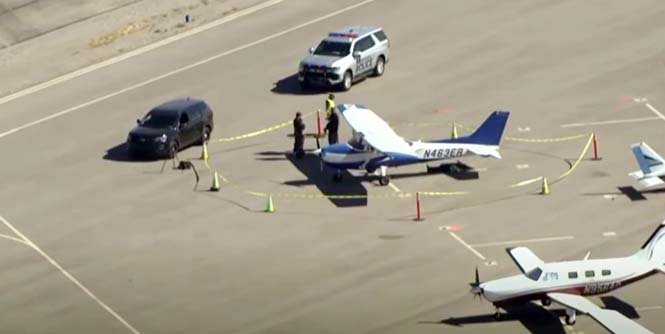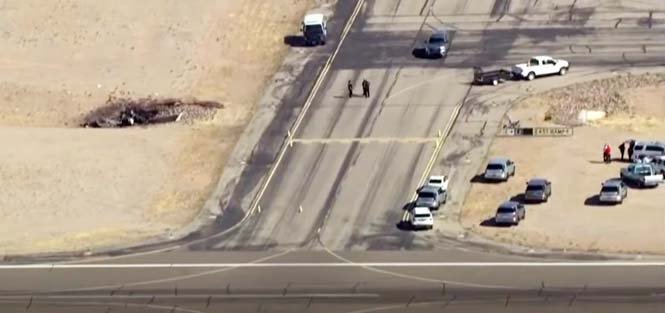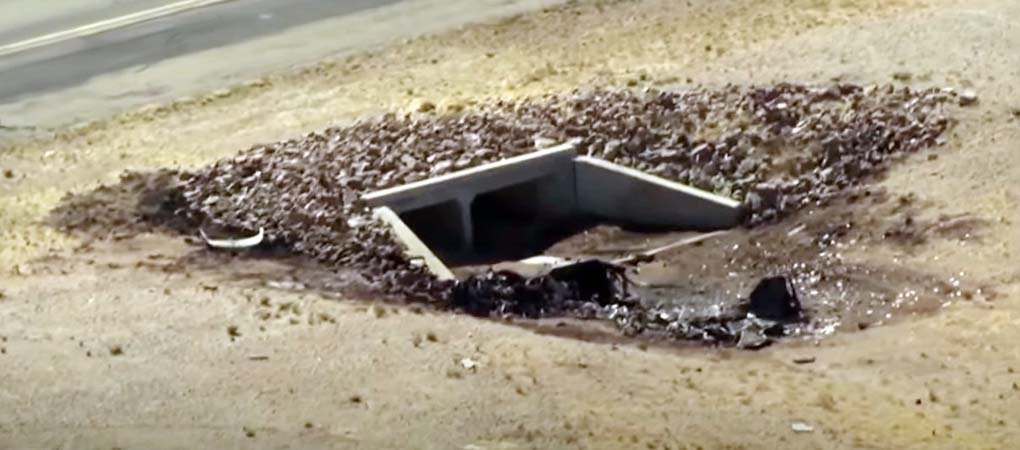Introduction
A quiet Tuesday afternoon in Arizona turned catastrophic when two small planes collided midair near Scottsdale Airport, killing both pilots instantly. The incident, which unfolded just after 2:00 p.m. local time on June 10, has sent shockwaves through the aviation community and reignited urgent debates about airspace safety in one of the nation’s busiest regions for general aviation. As federal investigators scramble to determine the cause, locals mourn the loss of two seasoned aviators whose lives were cut short in a split-second tragedy.
The Collision: A Devastating Chain of Events
The planes involved were a Cessna 172 Skyhawk, a staple for flight training, and a Piper PA-24 Comanche, a single-engine aircraft often used for cross-country travel. According to The Arizona Republic, the Cessna, registered to SkyHigh Aviation, was conducting touch-and-go landing drills—a routine exercise for student pilots. Meanwhile, the Piper, piloted by Lila Nguyen, was returning from a photography assignment in Sedona, cruising at 3,500 feet.
Radar data obtained by CNN shows the two aircraft converged roughly two miles northeast of Scottsdale Airport (SDL) at 2:07 p.m. Air traffic control recordings reveal the Cessna’s pilot, Gregory Harner, had just received clearance for a practice approach. The Piper, however, was not in direct communication with SDL’s tower at the time of the collision, instead relying on a regional traffic frequency. Witnesses described the Cessna’s left wing shearing off the Piper’s tail section, causing both planes to plummet.
“There was no explosion—just a metallic screech, then silence,” said eyewitness Carla Ruiz, who captured cellphone footage of the spiraling Cessna. The Piper, now uncontrollable, crashed into an empty parking lot near Hayden Road, while the Cessna wreckage landed in a desert wash littered with saguaro cacti.
Victims: “They Lived for the Sky”
Gregory Harner, 58, was a revered flight instructor with over 12,000 hours of flight time. Colleagues at SkyHigh Aviation described him as a “safety-first mentor” who trained hundreds of pilots, including Phoenix Police Department helicopter crews. “Greg had this mantra: ‘Always see and be seen.’ He drilled it into every student,” said former trainee Sarah Lin, now a commercial pilot.
Lila Nguyen, 34, was a decorated Air Force veteran who transitioned to aerial photography after serving in Afghanistan. Her work, featured in National Geographic and Arizona Highways, often highlighted the state’s stark desert beauty. “She’d wake up at 4 a.m. to catch the perfect light over the Grand Canyon,” said her business partner, Marcus Cole. “Flying wasn’t just her job—it was her escape.”
Both pilots were flying solo. No passengers or ground injuries were reported, though the crash site’s proximity to a shopping plaza left many rattled. “It’s a miracle no one else was hurt,” said Sheriff’s Deputy Ramon Gutierrez in a press briefing.

Investigation: Congested Skies and Communication Gaps
The National Transportation Safety Board (NTSB) has launched a “go-team” to lead the inquiry, with a preliminary report expected by June 25. Early findings, cited by Aviation Week, suggest neither plane had ADS-B Out systems—technology that broadcasts a aircraft’s location to nearby pilots and towers. While ADS-B has been mandatory for most controlled airspace since 2020, older aircraft like Harner’s 1978 Cessna are exempt if they lack electrical systems to support it.
Scottsdale Airport, a non-towered facility for general aviation, relies on pilots self-reporting their positions via a shared radio frequency. But with 400+ daily takeoffs and landings—a mix of student pilots, tourist helicopters, and private jets—the airspace is notoriously chaotic. “It’s like a free-for-all during peak hours,” said retired commercial pilot Diane Carter, who frequents the area. “You’ve got trainees practicing stalls alongside $20 million jets.”
NTSB Chair Jennifer Homendy emphasized the human factor in a press conference: “Even with technology, midair collisions often boil down to a failure to see and avoid. We’re looking at training protocols, airspace design, and whether current regulations keep pace with traffic density.”
Human Toll: Trauma and Community Resilience
The crash has left lasting scars on witnesses and first responders. School bus driver Miguel Torres was unloading children nearby when debris scattered across the road. “The kids started screaming—they thought it was a meteor,” he told AZCentral. Counselors were dispatched to three schools as parents grappled with explaining the tragedy.
Meanwhile, the aviation community has rallied. A candlelit vigil at SDL drew over 200 pilots, students, and photographers. “Greg taught me to fly after my husband died,” said widow Elaine Pritchard, her voice breaking. “He gave me back my freedom.” Nguyen’s family has launched a scholarship in her name for women pursuing aviation careers, raising $50,000 in 48 hours.
Broader Implications: A System Under Strain
Arizona’s skies are among the deadliest in the U.S. for small aircraft. According to FAA data, the state saw 14 midair collisions between 2015–2023, with Scottsdale accounting for 30% of incidents. Critics argue the FAA’s reliance on voluntary safety measures—like the “See and Avoid” principle—is outdated. “We’re using 1950s rules for 21st-century traffic,” Rep. Ruben Gallego (D-AZ) told Politico. He’s co-sponsoring a bill to mandate ADS-B in all aircraft by 2028, subsidizing upgrades for older planes.
Opponents, including the Aircraft Owners and Pilots Association (AOPA), claim the cost—up to $10,000 per plane—would cripple small operators. “Not everyone can afford a glass cockpit,” argued AOPA president Mark Baker. Instead, the group advocates for expanded radar coverage and altitude corridors separating training zones from transit routes.

The Road Ahead: Safety vs. Accessibility
The NTSB’s final report, due in 12–18 months, could catalyze sweeping changes. Possible measures include:
- Stratified Airspace: Designating altitude bands for specific activities (e.g., training below 2,000 feet, transit above 3,500 feet).
- Enhanced Tech Requirements: Accelerating ADS-B adoption and integrating drone tracking systems.
- Improved Training: Simulating midair collisions in flight simulators, currently not mandated by the FAA.
For now, grief mingles with determination. At SkyHigh Aviation, students continue their lessons under a photo of Harner in Hangar 3. “He’d tell us, ‘The sky doesn’t forgive mistakes,’” said trainee Jake Rivera. “We’re flying sharper now—for him.”
Final Word
As the dust settles in Scottsdale, the crash serves as a grim reminder of the fragile balance between freedom and safety in aviation. While the skies will never be risk-free, the voices of pilots, families, and lawmakers alike echo a unified plea: Never again.
Related Video (Video Link)
Primary Sources
- The Arizona Republic – Details on the Cessna 172’s registration, training exercises, and initial collision timeline.
- CNN – Radar data analysis and air traffic control recordings from the moments before the collision.
- Aviation Week – Insights into ADS-B system deficiencies and exemptions for older aircraft.
- AZCentral – Eyewitness accounts, including Miguel Torres’s testimony about debris near schools.
- Politico – Rep. Ruben Gallego’s legislative push for ADS-B mandates and airspace reform.
- National Geographic & Arizona Highways – Context on Lila Nguyen’s aerial photography work.
- National Geographic:
- Arizona Highways:
- Federal Aviation Administration (FAA) – Midair collision statistics (2015–2023) and VFR guidelines.
- National Transportation Safety Board (NTSB) – Jennifer Homendy’s press conference remarks on human factors in aviation safety.
- Aircraft Owners and Pilots Association (AOPA) – Mark Baker’s opposition to mandatory ADS-B cos
Additional Contextual Resources
- NTSB Preliminary Report Guidelines – Framework for the ongoing investigation.
- FAA Visual Flight Rules (VFR) Handbook – Official documentation on pilot responsibilities.
- AOPA Safety Campaign – Advocacy for radar expansion and altitude corridors.
Explore More
- Tragic Midair Collision Close to Washington, D.C.: No Survivors Anticipated
- Seven Dead in Devastating Stampede at India’s Maha Kumbh
- High Fire Danger in Southern California as Hughes Fire Forces Leave
- Live Updates: Firefighters Battle New Threats as L.A. Winds Howl

